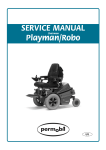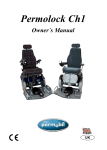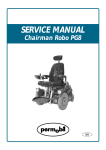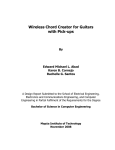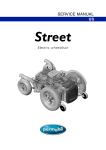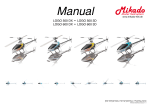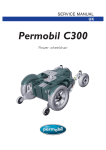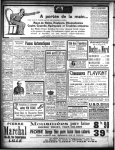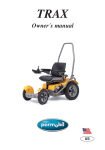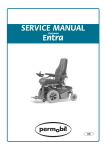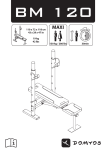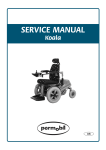Download SERVICE MANUAL Trax
Transcript
SERVICE MANUAL Trax US How to contact Permobil Permobil Inc. USA 6961 Eastgate Blvd. Lebanon, TN 37090 USA Phone: 800-736-0925 Fax: 800-231-3256 Email: [email protected] Head Office of the Permobil group Permobil AB Box 120 861 23 Timrå Sverige Tel: 060-59 59 00 Fax: 060-57 52 50 E-post: [email protected] Produced and published by Permobil AB, Sweden Edition no.3, 2010-02 Order no.: 201096-US-0 Contents Contents Introduction .........................................................................................................................5 Technical support .............................................................................................................5 Spare parts.......................................................................................................................5 Warranties ........................................................................................................................5 Maintenance.....................................................................................................................5 Rating plates........................................................................................................................6 Raising the seat lift .............................................................................................................7 Covers ..................................................................................................................................8 Changing the batteries .......................................................................................................10 Removal ...........................................................................................................................10 Fitting ...............................................................................................................................11 Changing the drive wheel ..................................................................................................12 Changing the brake release wires.....................................................................................14 Changing/adjusting the magnetic brake...........................................................................16 Changing the drive motor ..................................................................................................19 Removal ...........................................................................................................................19 Fitting ...............................................................................................................................21 Changing the carbon-brush in the drive motor ...............................................................23 Removal of the carbon-brush...........................................................................................23 Fitting the carbon-brush ...................................................................................................24 Changing the seat lift motor ..............................................................................................25 Changing the seat lift .........................................................................................................26 Removal ...........................................................................................................................26 Fitting ...............................................................................................................................27 Changing the bush in the front/rear wheel assembly .....................................................28 Steering knuckle spring mounting in the front wheel assembly ...................................30 Manual steering (moving between the right and left sides) ...........................................32 Changing the steering wire (adjustment) - front wheel adjustment (Toe-in) ................33 Power steering (adjustment)..............................................................................................35 Potentiometer, front wheel assembly ...............................................................................36 Changing the lights/indicators ..........................................................................................37 Changing the wheel base (manually)/Electrical wheel base adjustment ......................38 Bumper positions................................................................................................................40 Pinch protection switch......................................................................................................41 Changing the seat swivel direction (manually/electrically) ............................................42 Changing the cable of the lights potentiometer ..............................................................43 Changing/moving the charging socket.............................................................................45 Changing the electronics (Safe Gate) ...............................................................................46 Changing the jack panel.....................................................................................................47 Changing the fuses in the electronics and jack panel....................................................48 "Battery cut-out" main fuse ...............................................................................................49 Accessories (bows, luggage basket/box, crutch holder, rear-view mirror) ..................50 Cable laying .........................................................................................................................56 Wiring diagram ....................................................................................................................58 4 Introduction Introduction The Service Manual is intended for technical personnel who maintain and repair power wheelchairs. It is important that anyone who performs maintenance and repairs described in this manual reads and understands the content of this manual so that the work is performed professionally. Always state the chassis number when contacting Permobil to ensure that the correct information is provided. Technical Support In the event of technical problems, you should contact your dealer, or Permobil Inc. USA at 800-736-0925. Spare parts Spare parts must be ordered through your dealer. Warranties Contact your dealer or Permobil Inc. USA for information about the warranties for this chair. Maintenance See the information in the Owner’s Manual. 5 Introduction Rating plates Rear edge of battery box Trax Chassis Identity marking Chassis no. Seat lift Identity marking Seat lift 6 Rating plates Raising the seat lift manually If the seat lift cannot be raised in the normal manner because the batteries are discharged or the adjustment device is defective, the seat can be raised manually with a 13 mm open-end spanner. NB. An Allen key is used on older wheelchairs. WARNING! Warning! A drill must not be used to raise the seat.There is a risk of damage to the electronics unit. Turn counterclockwise to raise the seat lift. 1. Raise the seat lift by turning the centre bolt on the front of the seat lift counterclockwise, see the figure to the right. Raising the seat lift electrically The seat lift is raised electrically using the button box on the manoeuvring panel, see the Instructions for Use. 7 Raising the seat lift Cover (with fixed seat tube) Removal 1. 2. 3. Loosen the rear Allen screws and tip the seat forwards, see the figure to the right. Unscrew the four screws which hold the cover in place. Lift off the cover. NB. Be careful with the cable which goes to the rear lights. Disconnect the contact which is connected to the jack panel. Fitting 1. 2. 3. Rear Allen screw Place the cover on the chassis after the rear lighting cable has been connected to the jack panel. NB. The rear lighting cable must not be pulled over any of the drive motors. There is a risk that the cable will become caught between the motor/brake and the cover. Screw down the four screws which hold the cover in place. Fold the seat down and refit the rear Allen screw. Tighten the screw properly. 8 Covers Cover (with seat lift) Removal 1. 2. 3. Raise the seat to its highest position. If the battery is discharged, see page 6. Unscrew the four screws which hold the cover in place. Lift off the cover. NB. Be careful with the cable which goes to the rear lights. Disconnect the contact which is connected to the jack panel. Cover screws Fitting 1. 2. Place the cover on the chassis after the rear lighting cable has been connected to the jack panel. NB. The rear lighting cable must not be pulled over any of the drive motors. There is a risk that the cable will become caught between the motor/brake and the cover. Screw down the four screws which hold the cover in place. 9 Changing the batteries Changing the batteries NB. Use protective goggles when working with batteries. WARNING! First switch off the power on the manoeuvring panel before switching the power off on the main fuse. Front Clamping bow Removal 1. Place the wheelchair on a level base. Raise the seat to its highest position. If the battery is completely discharged, it is possible to crank the seat lift up using the hexagon head bolt or Allen screw. The screw is located at the front under the seat. See "Raising the seat lift" on page 6. Battery connection, front If the chair has a fixed seat bracket/tube, loosen the rear screw, see page 7, and the seat can be tipped forwards. 2. Switch off the power on the manoeuvring panel and then switch off the electric circuit using the battery cut-out. 3. Remove the cover, which is held in place by four screws. See page 7. 4. Disconnect all battery connections, the positive poles first and then the negative poles. 5. Loosen the straps which hold the batteries in place. Fold the front straps forwards over the front of the battery box. Front Battery connection, rear poles Check that the clamping bow remains in position when the strap is loosened. See the top figure. Lift out the batteries. Use the batteries handles. 10 Changing the batteries Fitting 1. 2. 3. 4. 5. 6. Insert two new gel batteries. The battery poles must face out from the centre. Fix the batteries in place with the straps. Tighten the straps properly so that the clamping bow is tensioned. Connect the battery connections, first the negative poles and then the positive poles. NB. The cables must be located correctly. See the figure below. Refit the cover after the rear lighting cable has been connected to the jack panel. See page 7. Switch on the battery cut-out. Charge the batteries. Red cable - Batt. + – + Black cable - Batt. - Front + – Front Green cable - Batt. + Clamping bow Green cable - Batt. - Battery connections 11 Changing the drive wheel Changing the drive wheel Removing the rear wheel 1. Raise and block up the wheelchair's chassis so that the wheel does not reach the ground. Thread the plastic plug out of the centre hole. 2. Loosen and remove the centre screw C, the Nordlock washer B and the rim locking washer A. See the figures to the right. 3. Pull the wheel off the shaft. 304103-99-0 if the wheel is tight. Use puller Removal tool 304103-99-0 Fitting 1. Check the axle and rim for any damage. If necessary, you should clean these parts of dirt and rust. If any parts are damaged, they should be replaced. 2. Check that the key fits solidly in the keyway of the axle. If necessary, install the new key and check for fit. 3. Lubricate the shaft with a thin layer of copper paste (Würth 0893800x, Art. no.: 1820540). Fastening the rear wheel Warning! Do not use any type of lubrication in the threaded hole in the axle or on the bolt. If necessary, you should clean these parts. 4. Fit the wheel onto the axle. The use of hand force only is preferred, but, if need be, carefully use a rubber mallet, whose head diameter is no less than 1.5 inches (38 mm), to ensure that the rim is fully seated upon the motor. NB! Hitting too hard with a rubber mallet could cause damage to the gear. 5. Fit the rim locking washer A, the Nordlock washer B and the centre screw C and tighten to secure the wheel. Fit the hubcap. NB! The bolt must be used once only. Removed bolt is not allowed to be refitted. Warning! Other types of bolts or washers are not to be used.. Warning! Do not use any other type of thread lock. 12 Changing the front wheel Removing the front wheel 1. Raise and block up the wheelchair's chassis so that the wheel does not reach the ground. Remove the plastic plug from the centre hole. 2. Fold out the locking lip on the toothed plate connector. 3. Thread the axle nut off the wheel axle. 4. Pull the wheel off the axle. Release the axle nut Fitting the front wheel 1. Fit the wheel onto the axle. 2. Place the locking washer on the axle. 3. The nut must not be tightened too hard. The wheel must turn easily. Fold the toothed plate connector's locking lip into the axle nut's recess so that it is fixed. 4. Thread the plastic plug back into the centre of the wheel rim. Thread off the axle nut 13 Changing the brake release wires Changing the brake release wires The right wire controls the left brake unit and the left wire controls the right brake unit. Removal 1. Raise the seat lift to its highest position. If the chair is equipped with a fixed seat tube, the screw at the rear of the seat must be loosened so that the seat can be tipped forwards. 2. Remove the cover. See page 7. Press the brake release handle down to its lower position to facilitate removal. 3. Loosen the two screws in the pinch protection plate (1). 4. Loosen the locking nut (2). 5. Screw the adjusting screw (3) all the way in. 6. Loosen the wire at the magnetic brake and at the brake release handle. Magnetic brake Release clamp 2 3 1 Brake release mechanism 14 Changing the brake release wires Fitting 1. Fit the wire first at the magnetic brake and then at the release lever. 2. Adjust the length of the wire sleeve using the adjusting screw (3) so that the wire is tensioned but does not pull on the release clamp. 3. Mount the brake release mechanism on the chassis. 4. Check that the brake works. Release the brake with the release lever and check that the wheel can turn. 5. Screw any pinch protection plate in the brake release mechanism in place. 6. Refit the cover. See page 7. NB. Check that the switch for the pinch protection switches by lowering the seat lift and simultaneously pressing the switch at the front of the cover. The lift should then stop. Pinch protection plate Release clamp Brake release handle Brake release handle Fastening the wire at the brake 15 Changing the magnetic brake Changing/adjusting the magnetic brake Removal 1. Raise the seat to its highest position. 2. Remove the cover, which is held in place by four screws. See page 7. 3. Disconnect the electrical connection of the magnetic brake. See the figure to the right. Electrical connection of the magnetic brake 4. Detach the brake release wire first from the drive assembly and then from the clamp of the magnetic brake. Brake release wire attachment 5. 6. Unscrew the three screws which hold the brake and remove the brake, brake disc and cover. Note the position of the brake release arm. Remove the brake 16 Changing the magnetic brake Fitting 1. Check the setting of the brake. Follow the instructions on the decal on how the two Allen screws are adjusted. Brake setting 2. Place the magnetic brake's brake disc in the brake assembly. Magnetic brake 3. Put on the cover. Magnetic brake 17 Changing the magnetic brake 4. Insert a screw to align the parts and screw the magnetic brake in place on the motor using the three screws. Magnetic brake 5. Connect the magnetic brake's electrical connection to the jack panel. 6. Fit the chassis cover. See "Covers", page 7. The magnetic brake's electrical connection 18 Changing the drive motor Changing the drive motor Removal NB. The right and left motors are fitted and removed in the same way. Therefore, the procedure is described only for the left motor. When changing the left drive motor, it is necessary, however, to loosen the extension motor. 1. If the wheelchair is equipped with electrical extension, it must be extended to its outermost position. This applies only when the left motor is to be changed. 2. Raise the seat to its highest position. 3. First switch the power off on the manoeuvring panel's OFF button (0) before switching the power off on the main fuse/battery cut-out. 4. Remove the cover. See page 7. 5. Block up the appropriate side of the wheelchair. 6. Remove the rear wheel. See "Changing the drive wheel", page 10. 7. Detach the electrical connections from the interference suppression card. Detach the electrical connections for the magnetic brake. See the centre figure to the right. 8. Unscrew the electronics, which are held in place by three screws. See page 42. 9. then from the clamp of the magnetic brake. See the figure to the right. Main fuse/battery cut-out Magnetic brake connection Interference suppression card Cable connections (left motor) Brake release wire 19 Changing the drive motor 10. Unscrew the sheet metal mounting where the jack panel is mounted. Tip up the electronics and the jack panel so that there is room to remove the left drive assembly. See the figure to the right. Bracket to the jack panel. Electrical extension: If the wheelchair is equipped with electrical extension, it must be extended to its outermost position. Remove the rear extension adjustment device from the mounting. Then press the front wheel assembly in approximately 10 cm. Fold the adjustment device motor (electrical extension) away from the drive assembly in order to be able to remove the drive assembly. Left motor 11. Loosen the three screws of the drive assembly. Loosen the motor 12. Lift the drive assembly out of the chassis. Lift out the motor 20 Changing the drive motor Fitting 1. When a new drive motor is to be fitted, the magneticbrake must be moved over from the old drive assembly. See "Fitting the magnetic brake" on page 12. 2. Lift the motor into place on the chassis. Lift the motor in 3. Screw the motor in place with the three screws. Fit the motor 4. First attach the brake release wire to the magnetic brake's clamp and fix the brake cable to the mounting on the motor. See the figure to the right. Brake release wire 21 Changing the drive motor Fitting the drive motor, cont. 6. Screw the jack panel in place with two screws. See (1) in the figure to the right. Screw the electronics in place from the outside of the chassis. The electronics are fixed with three screws. See (2) in the figure to the right. 2 2 2 1 Rear wheel assembly 7. Connect the magnetic brake. Screw the electrical connections in place on the interference suppression cards. 8. Fit the rear wheel. See "Changing the drive wheel", page 10. 9. Refit the cover. See page 7. 1 1. Electronics 2. Jack panel Magnetic brake connection Interference suppression card Cable connections (left motor) 10. Switch on the main fuse/battery cut-out. Battery cut-out 22 Changing the carbon-brush in the drive motor Innehåll Changing the carbon-brush in the drive motor Removal 1. Remove the cover. See page 7. 2. Unscrew the two cables which are connected to the drive motor. See the figure to the right. 3. Unscrew the interference suppression card from the drive assembly. The interference suppression card is held in place by two screws. Interference suppression card Cable connections in the drive motor 4. Remove the brush holder by pressing the cable terminal clockwise with your thumb. See the figure to the right. NB! Change only one brush holder at a time. Removing a brush holder 5. Tip the brush holder forwards carefully. Brush holder 23 Changing the carbon-brush in the drive motor 6. Unscrew the cable connection from the brush holder. NB. Make sure that the screw does not get into the motor. If it does, the motor has to be changed. Change only one brush holder at a time. Ensure that the cable which is located in the brush holder is not stretched. Loosen the cable connection 7. Change the brush holder. Ensure that the cable which is located in the brush holder is not stretched and does not get into the motor. Cable Change the brush holder Fitting (Takes place in reverse order, see above) 1. Screw the cable connection onto the brush holder. 2. Press the brush holder into the drive assembly. 3. Screw the two cables from the interference suppression card to the brush holders. 4. Screw the interference suppression card to the drive assembly with two screws. 5. Refit the cover. See page 7. Fitted brush holders (seen from inside the motor) 24 Changing the seat lift motor Changing the seat lift motor Cable connection Removal 1. Raise the seat lift and remove the cover. See page 7. 2. Disconnect the seat lift motor's cables from the jack panel. 3. Unscrew the two screws which hold the motor at the very rear of the seat lift. See the figure to the right. Pull the motor backwards so that the motor is released. Seat lift motor mounting Warning! WARNING! The seat lift motor must not be operated before the motor has been properly screwed to the seat lift. See the figure at the top right. There is a risk of material damage. Fitting 1. Press the motor shaft into the seat lift's screws. 2. Tighten the two screws which fix the motor in place on the rear of the seat lift. See the figure to the right. 3. Connect the seat lift motor's cables to the jack panel. Cable connection Motor mounting Seat lift motor connection 25 Changing the seat lift Changing the seat lift Removal 1. Raise the seat lift and switch off the electric circuit on the manoeuvring panel and then the battery cut-out. See page 15. 2. Remove the cover. See page 7. 3. Disconnect the seat's cable connection from the jack panel. Cut off the cable ties or open the quick-action fasteners which fix the cables in the seat lift. See the figure to the right. Cable attachment 4. Unscrew the two screws under the seat mounting. Lift the seat off the chassis. Detach the cables from the battery poles and remove the batteries. See page 8. 5. Disconnect the seat lift motor's cables from the jack panel. Unscrew the two screws on the seat lift motor and remove it. See page 21. Seat mounting 6. Unscrew the screw and locking nut at the very rear of the seat lift. See the figure to the right. 7. Unscrew the locking nuts, washers and screws on both sides of the seat lift at the very bottom of the mounting. 8. Lift out the seat lift. Seat lift mounting 26 Changing the seat lift Fitting 1. Place the seat lift in the mounting on the chassis. 2. Screw the seat lift in place at the bottom of the mounting using screws, washers, ball bearings and locking nuts. Mounting the seat lift 3. Screw the seat lift in place in the rear mounting with screws and locking nuts. Tighten the screws properly. 4. Mount the seat lift motor at the very rear of the seat lift. See page 21. 5. Connect the cables of the seat lift motor to the jack panel. Mounting the seat lift 6. Lift the batteries back onto the chassis. Attach the battery connections, first the negative poles and then the positive poles. See page 9. 7. Lift the seat and seat plate onto the seat lift. Screw the two screws in place under the seat mounting. See the figure to the right. Tighten the screws properly. 8. Connect the seat's cable connection to the jack panel. Tie the cables in place in the seat lift. See the figure to the right. 9. Refit the cover. See page 7. Mounting the seat 10. Switch on the main fuse/battery cut-out. Fixing the cables 27 Changing the bush Changing the bush in the front/rear wheel assembly Changing the bush in the rear wheel assembly 1. 2. 3. 4. 5. 6. 7. 8. Switch off the electric circuit on the manoeuvring panel and then on the battery cut-out. See page 15. Remove the foot plate. See page 32. Detach the steering wire mounting from the front wheel assembly. See the figure to the right. Cut off the cable ties which hold the lighting cables in the front wheel assembly. Disconnect the contacts for the front lights. Loosen the steering wire's mounting in the front wheel assembly. See the figure to the right. Manual length adjustment: Loosen the front wheel assembly's mounting at the very rear of the chassis. See page 34. Electric length adjustment: Loosen the front wheel assembly's mounting at the very rear of the chassis. See page 35. Unscrew the stop lug from the centre tube. The stop lug is mounted between the batteries. If necessary, remove one battery to remove the stop lug, which is held in place by four screws. See the figure to the right. Block up the rear wheel assembly and pull the front wheel assembly away from the chassis. Use a special tool or remove the bushes in some other way from the front wheel assembly's insert in the chassis. Press in new bushes. The innermost bush is pressed in to the edge of the recess for the stop lug. The outer bush should be flush with the front edge of the tube. Fit the front wheel assembly back on the chassis. Apply loctite 628 to the threads of the four screws and screw the stop lug in place. Mount the length adjustment at the rear of the chassis. Steering wire mounting Contacts Steering wire Remove the front wheel assembly Stop lug Bush Bush in the insert of the rear wheel assembly Changing the sliding bearing in the swing arm 1. 2. 3. 4. 5. Raise the seat lift and switch off the electric circuit on the manoeuvring panel and then the battery cut-out. See page 15. Remove the cover. See page 7. IMPORTANT! Block up the wheelchair under the battery box. Detach the steering wire from the steering link. Remove the plastic plug at the bottom of the steering link and loosen the screws for the lower swing arm frame. Note the spacer ring between the chassis and the steering link. Carefully fold down the swing arm frame. NB! Check that the rear bumpers are not bent when the swing arm frame is folded down. 28 Steering link Swing arm frame Detach the steering wire and loosen the swing arm frame Changing the bush 6. 7. 8. Press out the inner sleeve which is located in the bearing. Press out the sliding bearing which is located in the swing arm. Press in a new bearing. NB! Be very careful that the edge of the sliding bearing is not damaged during fitting. If the edge is damaged, it is more difficult to fit the inner sleeve. 9. Swing arm Fit the sleeve back in the bearing. See the figure to the right. Sliding bearing Inner sleeve Bearing in the swing arm 10. Before the lower swing arm frame is screwed in place, check that the spacer is placed between the swing arm and the steering link. 11. Place the swing arm frame in the mounting on the chassis and screw it in place. Steering link 12. Reattach the steering wire with a clamp. Spacer Spacer on the steering link Changing the plastic guide on the swing arm 1. Raise the seat lift and switch off the electric circuit on the manoeuvring panel and then the battery cutout. See page 15. 2. Remove the cover. See page 7. 3. IMPORTANT! Block up the wheelchair under the battery box. 4. Detach the steering wire from the steering link. 5. Remove the plastic plug at the bottom of the steering link and loosen the screw for the lower swing arm frame. Carefully fold down the swing arm frame. Bumper Swing arm folded down Bumper check NB. Check that the rear bumpers are not bent when the swing arm frame is folded down. See the figure to the right. 6. Drill away the pop rivet which holds the plastic guide. 7. Change the plastic guide and fasten it with a pop rivet. 8. Screw the swing arm frame to the chassis and fit the plastic plug on the steering link. 9. Attach the steering wire to the steering link. Swing arm frame plastic guide Plastic guide, seen from the inside 29 Steering knuckle spring mounting Steering knuckle spring mounting Changing the steering knuckle spring suspension or steering knuckle bearing and O-ring 1. Block up the front wheel assembly. 2. Remove the front mudguard. See page 33. 3. Remove the front wheel. See page 10. Front mudguard 4. Remove the articulated strut. Remove the locking pin and pull apart the articulated strut or loosen the screw in the steering mounting. 5. Remove the plastic plug using a screwdriver. Plastic plug Articulated strut ball Remove the articulated strut and plastic plug 6. Loosen the M8 screw and lift up the steering mounting. Loosen the steering mounting 30 Steering knuckle spring mounting 7. Lift up and turn the steering mounting. Press out the spring using a screwdriver. NB. Be careful with the two O-rings and sliding bush which are located in the end position. If the bearings and O-rings need changing, press out the sliding bearing, remove the O-rings and fit new ones. 8. 9. Change the ball bearing, sliding bush and knuckle spring as required. Press out the steering knuckle spring Refit the steering mounting. Press the articulated strut in place on the ball and fix it with the locking pin. Sliding bush with ball bearing Refit the sliding bush with the ball bearing. Changing the knuckle spring 10. Press the M8 screw down hard so that it threads. Tighten the screw close against the end of the steering knuckle. 11. Press the plastic plug back in. 12. Refit the front wheel. See page 10. 13. Refit the front mudguard. See page 33. Screw the ball bearing back 31 Manual steering Manual steering (moving between the right/left) Steering on right or left side 1. 2. 3. Remove the cover. See page 7. Remove the foot plate. See page 32. Remove the protective plate under the front wheel assembly. See page 32. NB! For manual steering it is necessary for the steering wire to be mounted on the same side in the front wheel assembly as the joystick is mounted. This is to ensure that the wheelchair turns in the right direction when the joystick is moved. 4. 5. 6. 7. 8. 9. 10. 11. 12. 13. 14. 15. 16. Loosen the steering wire's ball joint, which is located at the very front in the steering plate of the front wheel assembly. It is loosened using the nut which is located on the lower side of the front wheel assembly. Loosen the steering wire's mounting at the rear edge of the foot plate. Unhook the spring in the rear wheel assembly which fixes the steering wire in the right position. See the figure to the right. Disconnect the potentiometer and front light cables from the jack panel and from the cable holder on the chassis. Detach the steering wire from the joystick mounting and the holder on the chassis. Unscrew the joystick mounting from the chassis. Place any screw in the hole so that the swing arm does not fall down. Unscrew the cover protection from the expander bar. It is mounted with three screws. Turn the cover protection and move the potentiometer and front light cables to the other side of the bar. Screw the cover protection in place on the other side of the expander bar. Screw the steering wire's ball joint in place on the other side of the front wheel assembly's steering plate in the hole intended for it. Pull out the steering wire with the cables from the rear. Press it in in the same position on the opposite side. Connect the cables to the jack panel and fix them in the cable holder. Hook the spring in place in the mounting on the opposite side and in the cables. Screw the joystick mounting in place in the appropriate hole on the other side of the chassis. Move the screw removed over to the other side. Screw the steering wire in place in the appropriate hole. Fix the steering wire on the chassis by screwing the transferred steering wire mounting in place. See the figure to the right. Check and possibly adjust the stop screws for the steering triangle so that, at full joystick deflection, there is a few millimetres play between the steering triangle and the screws. See page 30. Refit the protective plate, foot plate and cover. 32 Front wheel assembly Cover protection Expander bar Spring Rear wheel assembly, spring Steering wire mounting Mounting on chassis, joystick Changing the steering wire, front wheel adjustment Changing the steering wire, front wheel adjustment Changing the steering wire 1. 2. 3. 4. 5. 6. 7. 8. 9. 10. 11. 12. 13. 14. 15. Remove the cover. See page 7. Remove the foot plate. See page 32. Remove the protective plate under the front wheel assembly. See page 32. Loosen the steering wire's ball joint, which is located at the very front in the steering plate of the front wheel assembly. It is loosened using the nut which is located on the lower side of the front wheel assembly. Loosen the steering wire's mounting at the rear edge of the foot plate. Unhook the spring in the rear wheel assembly which fixes the steering wire in the right position. See the figure to the right. Cut off the cable ties which fix the potentiometer and front light cables to the steering wire. Loosen the cable holder in the rear wheel assembly. See the figure below. Detach the steering wire from the joystick mounting and the holder on the chassis. Change the damaged wire. Place the new wire in the same position as the wire replaced. Screw the steering wire's ball joint in place in the front wheel assembly's steering plate. Fix the steering wire in the mounting at the very rear of the foot plate. Fix the cable between the batteries as shown in the figure to the right. NB. Do not tie the steering wire together with the brake wires and the pinch protection cables. Fix the cable in the cable holder in the rear wheel assembly. Only the steering wire is to be fixed in the holder. NB. No cable tie must be mounted so that it prevents the steering cable from sliding in the cable holder (20 cm). Screw the steering wire in place in the joystick mounting. Choose a hole so that the joystick ends up in a suitable position. Fix the steering wire in the chassis steering wire mounting. Hook the spring in the mounting in place on the cable and on the chassis. Tie the potentiometer and front light cables together with the steering wire. NB. No cable tie must be mounted so that it prevents the steering cable from sliding in the cable holder (20 cm). Refit the protective plate, foot plate and cover. 33 Front wheel assembly Cable tie between batteries Cable holder Spring in rear wheel assembly Steering wire mounting Mounting on chassis, joystick Adjustment of Toe-in Adjustment of Toe-in Adjustment An important part of the steering system is the adjustment of toe-in. NB. Toe-in must be 2-4 mm measured at the centre line of the tyre. 2-4 mm shorter distance than at the rear of the wheels Toe-in check Check that the steering triangle is in the position "straight ahead". Measure at the front wheel's centre line. The distance between the centre lines of the front of the front tyres must be 2-4 mm less than the distance between the rear of the front tyres. Adjustment of Toe-in 1. Remove the foot plate. See page 32. 2. Remove the protective plate under the front wheel assembly. See page 32. 3. Check that the steering triangle is in the "straight ahead" position. See the figure to the right. 4. Loosen the M8 screws of the articulated struts under the steering plate. Toe-in Articulated strut Loosen also the stop nuts furthest out on both articulated struts 5. 6. M8 Turn the articulated struts on both sides half a turn. Check the measurement between the centre lines of the front wheels. The distance between the centre lines of the front of the front tyres must be 2-4 mm less than the distance between the rear of the front tyres. See the top right figure. Steering triangle Stop screws Steering triangle from below Screw the articulated struts in place in the steering plate. NB. The articulated struts must be in place when the measurements are taken. When the distance is 2-4 mm, the stop nuts must be tightened on both sides. 7. Fit the foot plate. See page 32. 8. Fit the protective plate under the front wheel assembly. See page 32. Locking nut Adjusting the stop screws Adjust the stop screws (M5) for the steering triangle so that, at full joystick deflection, there is a few millimetres' play between the steering triangle and the stop screws. Articulated strut in the front wheel assembly 34 Power steering (adjustment) Power steering (adjustment) Locking clamp Adjustment of power steering 1. Remove the locking clamp and loosen the ball joint furthest out on the steering wire from the steering arm. Power steering 2. Turn the front wheels fully to the right so that the steering wire is in its outermost position. Run the adjustment device electrically out to its end position. Check that the steering wire's ball joint passes the ball on the steering arm by at least 5 mm. See the figure to the right. 3. Turn the front wheels fully to the left so that the steering wire is in its innermost position. Power steering in end position Run the adjustment device electrically in to its end position. Check that the steering wire's ball joint passes the ball on the steering arm by at least 5 mm. See the figure to the right. 4. 5. If the ball joint does not pass the ball of the power steering in both end positions, adjust it on the steering wire. Remove the foot plate. See page 32. Loosen the locking nuts at both ball joints of the steering wire and thread the ball joints in or out. Adjustment must take place both in the front wheel assembly and at the power steering. NB. The wire must engage with the ball joint with at least 4 threads to ensure that the connection holds. Tighten the locking nuts after adjustment and check that the steering wire's ball joint passes the end positions of the power steering. See 1-3 above. Reattach the steering wire to the steering arm and the steering triangle of the front wheel assembly. Adjust the steering plate so that it is in the correct position "straight ahead" and left, right. See also page 30. Power steering in end position Locking nut Steering plate Adjustment in front wheel assembly Refit the foot plate. 35 Power steering (adjustment) Changing the potentiometer, front wheel assembly Removal 1. Unscrew and remove the foot plate if required. It is mounted with 8 screws. See the figure to the right. 2. Block up the front wheel assembly or tip the wheelchair onto its side. NB. Do not lift the seat. There is a risk that the seat lift will be damaged. 3. Unscrew and remove the protective plate under the front wheel assembly. 4. If necessary, loosen the cable tie for the cable located on the mounting under the potentiometer. 5. Loosen the locking tongue on the cable's contact and pull it out from the potentio-meter. 6. Loosen the two screws on either side of the potentiometer. 7. Pull the potentiometer off the axle. 8. Remove the axle, which is held in place with two screws. Foot plate Fitting 1. Fit the axle on the steering mechanism using the two screws. 2. Lubricate the O-ring with grease. Adjust the bevel on the axle journal so that it corresponds with the potentiometer. Press the potentiometer carefully into place on the axle. Protective plate under the front wheel assembly Screw the potentiometer in place in the holes provided under the front wheel assembly. It is screwed in place with one screw on each side. 3. Connect the potentiometer's cable to the potentiometer. 4. Fix the cable by tying it in place under the potentiometer on the mounting. 5. Screw the protective plate in place under the front wheel assembly. 6. Refit the foot plate. Cable tie Locking tongue Potentiometer 36 Changing the lights/indicators Changing the lights/indicators Changing the front lights 1. Detach the front mudguard from the front wheel assembly. It is held by three screws. Fold it down. 2. Unscrew and remove the protective plate on the inside of the front mudguard. Loosen the insert from the front mudguard. It is held by two screws from the front. See the figure to the right. Remove the insert from the front mudguard. 3. Fit the new insert in the contact. 4. Screw to the front mudguard with the two screws. Tighten the screws very carefully. Otherwise there is a risk that the glass may crack. 5. Refit the protective plate on the inside of the front mudguard. Screw the front mudguard in place with three screws. Front mudguard Changing the indicator lights 1. Detach the front mudguard from the front wheel assembly. It is held by three screws. Fold it down towards the foot plate. 2. Unscrew and remove the protective plate on the inside of the front mudguard. Pull out the clamp which fixes the indicator to the mudguard. 3. Pull the indicator housing away from the insert. 4. Pull out the bulb. 5. Press in a new bulb. 6. Press the indicator housing into the insert. Pull the rubber protector over the contact. 7. Place the indicator in the mudguard. Press the clamp which fixes the indicator in the mudguard back into place. Refit the protective plate on the inside of the front mudguard. Screw the front mudguard in place with the three screws. Front light/indicator Changing the bulb on the rear lights/ indicators 1. Unscrew the cover. See page 7. 2. Unscrew the two screws which hold the rear light. Lift the back light out of the cover. 3. Unscrew the glass from the rear light. 4. Replace the bulb. 5. Screw the glass back onto the rear light. Then screw the rear light in place in the cover. 6. Refit the cover. See page 7. Rear light 37 Changing the manual wheel base Changing the manual wheel base When delivered, the wheelchair is always transported at its shortest possible length. When it has been unpacked, it must be adjusted to the correct length. On wheelchairs which are equipped with manual extension, the length is adjusted on the adjustment bar in the rear wheel assembly. See the figures to the right. 1. Remove the screw and nut from the adjustment bar in the rear wheel assembly. 2. Set the desired distance between the seat and the foot plate. Choose between seven different lengths. See the table below. 3. Screw the adjustment bar in place. It is possible to set seven different lengths. When the wheelchair is transported, hole "G" in the adjustment bar always matches hole "G" in the chassis, i.e. the shortest length. See the example to the right. The lengths below indicate the c-c dimensions between the front and rear wheels. Other A B C D E F G Manual extension A B C D E F G Justerstång Adjustment bar lengths are: to A = 1015 mm to B = 980 mm to C = 945 mm to D = 910 mm to E = 885 mm to F = 850 mm to G = 815 mm Chassis Chassi C,D E,F G B A Positions of the adjustment bar NB. If the wheel base is mounted in its shortest position, service in the front wheel assembly will be made more difficult because the brake release handle will make it impossible to remove the foot plate in the normal way. However, it is possible to remove the foot plate by loosening the screws of the brake release handle and folding the handle away. It is then possible to lift off the foot plate. 38 Electric wheel base adjustment Electric wheel base adjustment Removal 1. Move the foot plate in. If the adjustment device motor for extension is defective, the adjustment device must be detached from the front wheel assembly and the rear wheel assembly. See the figures to the right. 2. Remove the protective plate under the front wheel assembly. See page 32. 3. Loosen the bolt on the flat bar under the front wheel assembly. 4. Raise the seat lift and switch off the power on the manoeuvring panel and then the main fuse/battery cut-out. 5. Remove the cover. See page 7. 6. Remove the side cover on the electronics and unscrew and remove the wide contact (SUB-D) and the charging contact on the other side of the electronics. Loosen the three screws on the rear of the chassis and lift up the electronics. See page 42. Loosen the mounting plate which holds the jack panel. It is held by two screws on the rear of the chassis. See page 43. 7. Loosen the screw at the rear of the adjustment device. 8. Block up the wheelchair under the battery box so that the wheels are approximately 5 cm clear of the ground. 9. Detach the bumper mountings on both sides. NB. When the wheelchair is blocked up under the battery box, the lower frame moves down, which makes it easier to change the extension motor. 10. Disconnect the connections on the extension motor. 11. Tip the motor so that it is free of the steering wire and pull it out backwards. Mounting in front wheel assembly Mounting in rear wheel assembly Fitting Fitting takes place in the reverse order. 1. 2. 3. 4. Fit the flat bar on the extension motor. When the flat bar is pressed into the extension tube, the bent end must point downwards. Screw the extension motor in place in the rearmost hole in the mounting on the rear wheel assembly. Screw the flat bar in place in the front wheel assembly. Connect the cable to the new adjustment device motor. NB. Check that the spring which pulls the steering wire down is intact. Fit the bumper mountings. Refit the electronics and jack panel. See pages 42-43. Steering wire with spring 39 Changing the bumper positions Bumper positions Adjusting the bumper positions WARNING! WARNING! Move only one bumper at a time. There is a risk of personal injury. 1 2 5 1. 6 3 4 7 Loosen the upper screw first on one bumper. Move to the desired position. Position 1, see the positions in the figure to the right, tolerates a person with a high weight. A light person should choose position 4 to obtain good suspension. Bumper position 2 Positions 5-7 are used to achieve very high ground clearance. NB. Positions 5-7 raise the centre of gravity and must be avoided for adults. Screw the first bumper in place in the new position. 2. Loosen the upper screw on the second bumper. Move the bumper to the position equivalent to that of the first bumper and screw it in place. 3 NB. When the bumpers are to be moved from positions 1-4 to positions 5-7, both bumpers must be moved at the same time. Block the wheelchair up under the battery box so that it does not fall down. Bumper position 3 40 Changing the pinch protection switch Changing the pinch protection switch Removing the pinch protection switch 1. Raise the seat lift. See page 6. 2. Remove the cover. See page 7. 3. Remove the pinch protection by loosening the two screws. See the figure to the right. 4. Cut off the two cable ties which fix the cable between the batteries. 5. Disconnect the contact of the pinch protection cable from the jack panel. 6. Pull the cable out forwards. Pinch protection Fitting the pinch protection switch 1. Screw the pinch protection in place with two screws. Straighten the pinch protection before screwing it in place. NB. Check that the pinch protection's switch roll is placed on top of the brake release plate before it is screwed in place. Tighten the screws until they meet the base. Tighten the screws but not too hard. 2. Lay the cable between the batteries and back towards the jack panel. Tie the cable to the brake release wire. NB. The cable from the pinch protection switch must not be tied to the steering wire. 3. Connect the cable's contact to the jack panel. Look at the decal to see where the contact is to be connected. 4. Refit the cover. See page 7. 5. Check that the pinch protection switch works. Laying the cable The seat lift must stop when it is lowered and the battery cover's front edge is pressed at the same time. Connection to the jack panel, seen from the rear 41 Changing the seat swivel direction Changing the seat swivel direction Manual seat swivel 1. Raise the seat lift and unscrew the seat. NB. Before the seat can be lifted off, the cable between the seat and the chassis must be disconnected. Disconnect the cable from the connection on the back. Loosen the centre screw and lift off the seat. Centre screw 2. Loosen the three screws and move the plate to the other side of the seat plate. NB. The plate must not be turned but only moved over to the other side. See the figure to the right. 3. Loosen the screws and nuts which hold the seat swivel lever. Reverse the lever and screw it back into place. Forwards NB. The screw for the seat swivel lever must not be tightened too hard. The lever must automatically return to its original position when it has been pressed down. 4. Moving the plate NB. On chairs which are equipped with a Trax seat, it is necessary to remove the plastic shell in order to be able to reach the screws on the top of the seat plate. Loosen the four screws which hold the plastic seat. Lever screws Spring plate screws Spring plate Seat screws (4) 5. Remove the two screws from the top of the seat plate with which the spring plate is mounted. 6. Turn the spring plate through 90° to its new position. In order to facilitate the raising of the spring plate, the centre bearing must be used as a guide. Fix the spring plate with the screws in the new holes. 7. Screw the plastic seat back in place with screws, washers and locking nuts. Place spacers in the front holes. See the figure to the right 8. Refit the seat with the centre screw. Tighten it well. Connect the cable to the rear of the back. 9. Check that the seat swivel works. Seat swivel lever (bottom) Centre bearing The spring plate screws are moved to new holes Spring plate holes (top) 42 Changing the seat swivel direction Changing the seat swivel direction Electric seat swivel 1. Raise the seat lift and unscrew the seat. NB. Before the seat can be lifted off, the cable between the seat and the chassis must be disconnected. Disconnect the cable from the connection on the back. Loosen the centre screw and lift off the seat. 2. Under the seat on the seat plate is a decal which shows how the swivel stop should be mounted. NB. On chairs which are equipped with a Trax seat, it is necessary to remove the plastic shell in order to be able to reach the screws on the top of the seat plate. Loosen the four screws which hold the plastic seat. See page 38. 3. 4. 5. Centre screw Swivel stop decal The decal shows how the swivel stop should be mounted for right or left swivelling. Loosen the two screws on the swivel stop and turn the swivel stop. Screw in place again in the new holes. Check when mounting that the drive is on the correct side of the swivel stop. Refit the seat and connect the cable to the rear of the back. NB. The seat swivel direction must be changed in Mini-Config. Changes in Mini-Config. Start Mini-Config. Hold down the LIGHTS and MAX. SPEED buttons when the chair is started with the ON button. Set the parameter value: Press the max. speed button until 2 lamps light. Select the seat swivel direction: Move the joystick sideways to change the seat swivel direction from RIGHT to LEFT (standard value is right), i.e. from 1 to 0. Parameter value 1 = Right, i.e. the battery indicator is on. Parameter value 0 = Left, i.e. the battery indicator is off. Exit Mini-Config. Press down the ON button. Press down the ON button again to store the setting in the "active area". Repeat and store the setting in LED 1, LED 2 and LED 3, i.e. LIGHTS, L. INDICATORS and SEAT UP, as well, so that the function is guaranteed in all parameter sets. NB. For more detailed information, see page 53 or the Mini-Config. instructions for use. 43 Decal location New holes Swivel stop Turn the swivel stop Drive Seat swivel drive Changing the cable of the lights and potentiometer Changing the cable of the lights/ potentiometer Cable of lights, potentiometer Removal 1. 2. 3. 4. 5. 6. Raise the seat lift and remove the cover. See page 7. Remove the foot plate and disconnect the cable from the potentiometer. See page 32. Disconnect the cable's contacts which go to the front lights, one contact for each front light. See the figure to the right. Loosen the visible cable ties in the front wheel assembly. NB. Note how the cable is tied to the chassis and front wheel assembly. This will facilitate the fitting of the new cable. Unscrew the cover protection from the expander bar between the front wheel assembly and the chassis. Cut away all cable ties which fix the cable back to the jack panel. NB. Note how the cable is attached to the steering wire. See the figure to the right. Detach the cable from the cable holder in the jack panel and pull out the contact. Pull the cable out under the seat lift. Connection in front wheel assembly Cover protection Cable Laying between chassis and front wheel assembly Fitting 1. 2. 3. 4. 5. Lay the cable behind the expander bar and in under the seat lift back to the jack panel. Place the cable in the cable holder on the jack panel and connect the contact as shown on the decal on the chassis. Connect the contacts in the front wheel assembly, one contact for each front light, and pull the cable down to the potentiometer. Connect the contact to the potentiometer and tie the cable in place in the mounting. See page 32. Lay the cable under the cover protection on the expander bar. Screw the cover protection back with three screws. Tie the cable in place on the top of the front wheel assembly and back to the jack panel. See the figures to the right. Tie the cable to the steering wire in the rear wheel assembly as shown in the figure to the right. NB. No cable tie must be mounted so that it prevents the steering cable from sliding in the cable holder (20 cm). Ensure that the brake wires and switch cable are not tied to the steering wire. Refit the cover on the chassis. 44 Cable holder Cable Connection in jack panel Cable of lights potentiometer Connection in jack panel Changing/moving the charging socket Changing/moving the charging socket Removing the charging socket 1. Remove the cover. See page 7. 2. Unscrew the guard cap for the charging socket. This applies when moving the charging socket from the right to the left side, for example. 3. When the charging socket is moved, the cover cap must also be unscrewed from the cover and moved to the cut-out on the other side. 4. Unscrew the charging socket from the side mounting on the chassis. 5. Disconnect the charging cable contact from the electronics. Remove the electronics. See page 42. 6. Release the charging cable from the quick-action fasteners on the base plate and chassis. 7. If there is an electrical fault in the charging socket or cable, the whole jack panel must be replaced. See "Removing the jack panel" on page 43. Guard cap Charging socket, right side Cover cap Fitting the charging socket. 1. Screw the jack panel in place with two screws on the chassis. See page 43. This does not apply if the charging socket is being moved. 2. Screw the charging socket in place in the side mounting on the chassis with two screws. Do not tighten the screws too hard. 3. Lay the cable from the charging socket and down to the jack panel. See the figure to the right. Fix the charging cable to the quick-action fasteners. The charging cable must be placed in the cutout in the centre of the lower part of the jack panel. 4. Refit the electronics. See page 42. Cover cap, left side Charging socket in chassis Connect the 2-pin contact of the charging cable in the lower left part of the electronics. 5. Screw the guard cap in place in the cover. This applies when moving the charging socket from the right to the left side, for example. 6. Screw the cover cap in place in the corresponding holes on the other side. This applies when moving the charging socket from the right to the left side, for example. 7. Refit the cover. See page 7. Check that the lights cable of the rear cover is not caught between the motor/brake and cover. 45 Charging socket, cable laying to left side Changing the electronics Changing the electronics (Safe Gate) Removing the electronics 1. Raise the seat lift or tip the seat forwards. See pages 6-7. First switch off the power on the manoeuvring panel and then switch off the electric circuit with the battery cut-out. 2. Remove the cover. See page 7. 3. Disconnect the connections from the batteries positive (+) and negative (-) poles. 4. Cut the cable ties from the interference suppression cards. Unscrew the connections from the interference suppression card. 5. Remove the protective cover which is located on the right-hand side of the electronics. The protective cover is held in place by one screw. Unscrew the wide contact (SUB-D) and the panel cable. Disconnect the charging contact from the left side of the electronics 6. Unscrew the three screws which fix the electronics to the chassis. See the figure to the right. 7. Remove the electronics from the chassis. Removing/fitting the electronics Fitting the electronics 1. Screw the wide contact (SUB-D) in place and connect the panel cable to the electronics. Connect the charging cable's 2-pin contact to the lower left part of the electronics. 2. Place the electronics in the chassis. 3. Fit the electronics on the chassis. Screw the electronics in place with three screws on the rear of the chassis. 4. Fit the protective cover which is located on the right-hand side of the electronics. The protective cover is fitted with one screw. 5. Screw the cable connections in place on the interference suppression cards and tie the cable. See the figure to the right. 6. Connect the battery cable to the batteries positive (+) and negative (-) poles. 7. Switch on the battery cut-out/main power switch. 8. Refit the cover. See page 7. Electronics removed Check that the lights cable of the rear cover is not caught between the motor/brake and cover. NB. When fitting the electronics, it is important that the charging cable is pressed properly into position in the lower left part of the electronics. Otherwise the charging will not work. Check that the SUB-D contact is properly screwed to the electronics. 46 Cable tie Cable laying Changing the jack panel Changing the jack panel Removing the jack panel 1. First switch off the power on the manoeuvring panel and then switch off the electric circuit with the battery cut-out. 2. Remove the cover. See page 7. 3. Disconnect the connections from the batteries positive (+) and negative (-) poles. 4. Cut the cable ties from the interference suppression cards and unscrew the electronics connections to the interference suppression card. 5. Unscrew the three screws which fix the electronics to the chassis. See the previous page. 6. Remove the electronics from the chassis. See page 42. 7. Disconnect all contacts from the jack panel and release them from the quick-action fasteners. 8. Unscrew the charging socket from the chassis. It is held in place by two screws. NB. If the chair is equipped with electrical extension, the contacts must be disconnected from the adjustment device motor. 9. Unscrew the jack panel, which is held in place by two screws on the rear of the chassis. See the figure to the right. 10. Removal is facilitated if the mounting plate on the jack panel is first unscrewed. It is held in place by screws underneath. The jack panel's mounting on the chassis Fitting the jack panel 1. 2. Screw the jack panel in place with two screws. Screw the charging socket to the chassis. It is fixed to the chassis with two screws. Do not tighten the screws too hard. NB. If the chair is equipped with electrical extension, the contacts on the rear of the jack panel must be connected to the adjustment device motor of the electrical extension. 3. Connect all contacts to the jack panel and fix them in the quick-action fasteners. The contacts are connected as shown by the decal on the jack panel. 4. Connect the contacts to the electronics and screw the SUB-D contact in place. Fit the protective cover which is located on the right-hand side of the electronics. Fit the protective cover with one screw. 5. Place the electronics on the chassis. Connect the charging cable to the lower left part of the electronics. 6. Fit the electronics to the chassis. Screw the electronics in place with three screws. See the previous page. 7. Screw the electrical connections in place and tie them to the interference suppression card. 8. Connect the battery cable to the batteries positive (+) and negative (-) poles. 9. Switch on the battery cut-out/main power switch. 10. Refit the cover. See page 7. Check that the lights cable of the rear cover is not caught between the motor/brake and cover. 47 Jack panel Contacts in the jack panel Changing the fuses Changing the fuses for charging, adjustment device, lights/indicators The fuses for charging (20 A), the adjustment device (15 A) and lights/indicators (7.5 A) are located in the base of the rear wheel assembly (jack panel). They are easily accessible from the rear of the wheelchair between the bumpers. See the figures to the right. 1. Change the blown fuse. Location of the fuses Adjustment Lights/ Charging device indicators 1. Charging, 20A 2. Adjustment device, 15A 3. Lights/indicators, 7,5A Fuses in the jack panel Changing the fuses in the Safe Gate electronics NB. This must only be done after establishing why the fuse has blown. 1. Raise the seat lift. Remove the cover. See page 7. Be careful when lifting off the cover so that the rear lights cable is not damaged. Unscrew the fuse cover which covers the fuses of the electronics unit. 2. Change the blown fuse. 3. Refit the fuse cover and cover. Fuse cover for the Safe Gate electronics 1. Lights/indicators, 30A 1 2. Seat lift, 30A 2 3. Charging fuse, 30A 3 Investigate why the fuse has blown. There may be a major electrical fault, in which case a service engineer should be called. Safe Gate electronics fuses WARNING! 48 Changing the main fuse Changing the main fuse/battery cut-out Removal 1. First switch off the power on the manoeuvring panel and then switch off the electric circuit with the main fuse. Remove the cover. See page 7. 2. Disconnect the positive pole connections of the main fuse. 3. Unscrew the two screws on the rubber cover to release the main fuse's mounting plate. 4. Lift up the mounting plate with the main fuse out of the chassis 5. Pull out the main fuse's locking spike so that it is possible to remove the mounting plate. See the figure to the right. 6. The cables are detached by loosening the screw under the main fuse. Location of the main fuse WARNING! Investigate why the fuse has blown. There may be a major electrical fault, in which case a service engineer should be called. Detach from the mounting plate Fitting 1. Connect and fix the cables by tightening the screws under the main fuse. Tighten the screws well. 2. Place the main fuse in the mounting. Fix the main fuse in the mounting plate by pressing in the locking spike on the top of the main fuse. 3. Place the mounting plate with the main fuse on the chassis. 4. Screw the main fuse in place with the two screws located on the top of the rubber cover. 5. Connect the positive pole connections of the main fuse to the battery. 6. Refit the cover. See page 7. Check that the lights cable of the rear cover is not caught between the motor/brake and cover. Change the main fuse Detach the cables 49 Fitting accessories Fitting accessories Fitting bows Fitting 1. Bow Remove the centre screw which holds the electronics. Fit the rear mounting with 3 M6x40 and plain washers. See the figure to the right. M5x12 2. Fix the side bows on the pins in the rear mounting. See the centre figure to the right. NB. These run in oblong grooves. Screw them in place with 2 M8x16 and plain washers. NB. The M10 bolts for the pins are tightened later. 3. Adjust the position of the side bows against the front corners of the battery box so that they can be screwed in place with 6 M5x12 and plain washers. Then tighten the pins two M10x16 bolts and plain washers. 4. Fit the upper bow in the welded tubes of the side bows. Fix the upper bow with the two star handles. See the bottom figure to the right. Ensure that the upper bow can easily be removed from the side bows. 5. Mounting of the bow at the front M8x16 Then tighten all the bow's screws. M10x16 Removal 1. Loosen the star handles and lift off the upper bow. 2. Unscrew the side bows rear 2 M8x16 screws and plain washers. 3. Loosen the front screws of the side bow. Each mounting is held in place with three M5x12 screws and plain washers. See the top figure to the right. 4. Lift the side bows off the chair. 5. Unscrew the 3 M6x40 screws and plain washers of the rear mounting. Mounting of the side bow at the rear Loosen the star handle when only the main bow is to be lifted off M8x16 Also see Assembly Instruction PAB 3262. M6x40 Mounting of the bows at the rear 50 Fitting accessories Fitting the crutch holder 1. Screw the mounting in place in the holes on the right or left side of the chassis. Use 3 M5x12 and plain 5.3x10x1.0 washers. Screwed to the rear mudguard NB. An extension sleeve must be used when the crutch holder is fitted on the power steering side in order to place it away from the adjustment device. 2. 3. The mounting is screwed in place in the holes Push the crutch holder as far as possible onto the mounting. Tip the crutch holder down towards the rear mudguard. Drill a 5.5 mm hole through the finished hole in the crutch holder down through the rear mudguard. Screw the crutch holder in place on the rear mudguard using an M5x16 screw and plain 5.3x15x1.5 washers and an M5 locking nut. Crutch holder The screw for the extension sleeve is always fitted at the outer end of the mounting. If the mounting is fitted on the right side without a joystick, the extension sleeve does not have to be used. The mounting is screwed in place in the existing holes on the side of the battery box NB. If a bow is fitted on the wheelchair, the crutch holder cannot be fitted with this mounting. Drill through the rear mudguard through the existing hole Other information The Velcro tape for holding the crutches is reversible. This means that the crutches can always be released easily regardless of whether they are fitted on the right or left side. Crutch holder with mounting Also see Assembly Instruction PAB 3263. Fitting the foot plate insert 1. The foot plate insert is screwed in place in the holes provided in the foot plate on the front wheel assembly. Fitting the rear-view mirrors 1. The rear-view mirrors are screwed to the front mudguards with three screws. Mounting of the rear-view mirror 51 Fitting accessories Fitting the luggage box/basket Fitting 1. Remove the rear cover screws. Remove the oval Permobil decal. This does not apply to the recessed decal. 2. Press the mounting down against the cover so that it touches the cover. Then screw the mounting in place in the two lowest holes. See the figure to the right. Use M5x16 galvanised screws. 3. Drill through the mounting and cover with a free-running bit (4 mm). Be careful not to damage the threads in the hole on the mounting. WARNING! Drilling entails a risk of material damage. Be careful of the electronics and cable under the cover. Do not drill too deeply as this could damage the cable or electronics. Fixing the mounting 4. Remove the cover. See also page 7. Raise the seat to its highest position. If the seat is equipped with a fixed seat tube, unscrew the rear Allen screw and tip the seat forwards. Unscrew and remove the four screws which hold the cover. Lift off the cover and remove the mounting. NB. Be careful of the cable which goes to the rear lights. Disconnect the contact which is connected to the jack panel. 5. Drill up the two other newly-drilled holes for the mounting in the cover with a 5.5 mm bit. 6. Screw the mounting to the cover with M5x16 screws and 5.3x12x1 washers in the top holes on the mounting. See the upper figures to the right. Fix the screws from beneath the cover with M5 locking nuts and large 5.3x15x1.5 washers. 7. 8. Refit the cover. See page 7. NB. Do not forget to connect the lighting cable. NB. The rear lighting cable must not be laid over any of the drive motors. There is a risk that the cable will become caught between the motor/brake and the cover. Position the mounting sleeve and fix it with the two quick-action locks. The rear cover screws fix the mounting's lower part. See the figure to the right. Drilling the cover Quick-action lock Cover screw Quick-action lock which fixes the mounting sleeve 52 Fitting accessories 9. Screw the lower part of the luggage box to the mounting sleeve. See the figure to the right. For standard fitting, the lock is turned out from the wheelchair. Use five M6x25 screws and washers and locking nuts. M6x25 Bar 10. Push the luggage box's hooks in under the mounting's bar. Open the box and press the palm of your hand against the base of the box so that it locks in the right position. Mounting the lower part of the box NB. The lower part of the luggage box can be turned through 180° on the mounting sleeve so that the lock faces the seat, i.e. forwards. Use the spanners to lock both the lid on the box and the box to the mounting. Luggage box Fitting the luggage basket 1. Proceed as described in points 1-9 on the previous page. 2. Place the mounting sleeve on the mounting and fix it with the two quick-action locks. Screw the luggage basket's mounting plate to the mounting sleeve. The mounting plate is screwed in place from beneath. Use three M6x12 screws and washers. 3. Mounting sleeve Mounting plate Screw the basket in place with four M5x10 screws and washers from the side. See the bottom figure to the right. Fitting the mounting plate Also see Assembly Instruction PAB 3275. M5x10 Luggage basket 53 Cable laying Cable laying, chassis Batteries 1. Cable laying to the positive (+) and negative (-) poles. 2. The green cable is laid down to the main fuse/battery cut-out. Cable laying at the batteries (seen from the front) Motor 1. Cable laying from the drive assembly and electronics. 2. The cable trunk to the batteries and right motor is laid over the electronics and through the hole on the fuse cover. See the arrow to the right. Cable laying at the motors (seen from the rear) Jack panel 1. Connection of contacts to the jack panel. 2. Look at the decal to see where the contacts are to be connected. Cable laying at the jack panel (seen from the rear) 54 Cable laying Cable laying, chassis Steering wire 1. Laying of the power steering cable. 2. Place the cable along the side of the chassis. Power steering cable Steering wire Laying of the steering wire (seen from the rear) Steering wire 1. Fixing the power steering cable to the chassis. Steering wire Power steering cable Laying the power steering cable (seen from the side) Front wheel assembly 1. Position of the cable for the front lights in the front wheel assembly. Cable laying in the front wheel assembly (seen from the side) 55 Cable laying Cable laying on seats CII/Trax arm rest 1. Under the arm rest, the cable must be laid in a loop before it is tied. See the figure to the right. 2. Check that the arm rest can be tipped up without the cable being stretched or damaged. Cable laying under the CII/T arm rest (seen from beneath) Trax seat 1. Fix the cable at the very front of the panel holder tube. 2. Then tie it at the base of the arm rest tube. 3. Lay the cable in a loop under the arm rest and tie it to the panel holder tube. 4. Check that the arm rest can be tipped up without the cable being stretched or damaged. Cable laying on the arm rest (seen from the side) Trax seat 1. Connect the panel cable to the bus socket. 2. Lay the cable in a loop and tie it with a few cable ties as shown in the figure to the right. 3 Check that the arm rest can be tipped up without the cable being stretched or damaged. Cable laying behind the seat (seen from the rear) 56 Notes 57 Distribution Chart 1 2 A + 24V Left brake + 24V Seat stop sensor 3 1 UL 0.56 Red 2 UL 0.56 Black 1 UL 0.56 Red 4 CABLE LOWER 8490 FKUX 0.25 White 2 SAFEGAT 8250 3 FRONT LIGHT CABLE 8257 Red Orange Yellow Green Violet Blue + 24V Right brake + 24V 1 UL 0.56 Red 2 UL 0.56 Yellow Front light 3 FKUX 0.25 Violette 4 FKUX 0.25 Blue 1 UL 0.56 Red 2 UL 0.56 Brown UL 0.56 Grey Right blink UL 0.56 Violette Left blink UL 0.56 Blue UL 0.56 Black UL 0.56 Red 7.5A FUSE BRAKE AND LIGHT 7.5A UL 0.56 Red UL 0.56 Red UL 0.56 Red UL 0.56 Red UL 0.56 Red UL 0.56 Red UL 0.56 Red Rk 2.5 Red UL 0.56 Red UL 0.56 Red UL 0.56 Red UL 0.56 Red UL 0.56 Yellow FKUX 0.25 White UL 0.56 Red REAR LIGHT CABLE 7828 + 24V UL 0.56 Red Red 1 UL 0.56 Red Rear light Brown 2 UL 0.56 Yellow Right blink Orange 3 FKUX 0.25 Violette 4 FKUX 0.25 Blue Left blink Black B UL 0.56 Grey UL 0.56 Violette + 5V UL 0.56 Pink POT. Servo feedback UL 0.56 Blue Servo feedback UL 0.56 Brown FKUX 0.25 Black 3 FKUX 0.25 Violette FKUX 0.25 Violette FKUX 0.25 Blue FKUX 0.25 Blue FKUX 0.25 Grey UL 0.56 Red UL 0.56 Yellow FRONT LIGHT CABLE 8251 HORN 15A FKUX 0.25 Green UL 0.56 Grey UL 0.56 Grey UL 0.56 Grey UL 0.56 Grey FKUX 0.25 Brown FKUX 0.25 Grey FUSE ACTUATOR UL 0.56 Green UL 0.56 Pink FKUX 0.25 Black 20A SERVO 1 2 UL 0.56 Violett UL 0.56 Violett 1 2 1 C 2 1 2 Left brake 22 + 24V 21 20 + 24V 19 Left light 18 Bumper 17 + 24V 16 + 24V Rig Rig Rk 2.5 Red Rk 2.5 Red 14 Servo feedback + Seat driver 13 12 Batter Batter Servo driver 11 Seat/servo - 10 Right brake 9 Right blink 8 Left blink Left Left Batt Batt Right light 7 6 Extender in 5 Extender out Horn 4 3 Charge sense 2 Servo feedback B B GND 1 B B Seat/servo - UL 0.56 Blue 2 Seat/sevo - Servo driver + UL 0.56 Blue 1 Seat driver Servo driver 15 UL 0.56 White UL 0.56 White 1 2 25 24 23 POWER RELAY PCB 8625 Back rest Extender Seat turn Seat/servo - 1 UL 0.56 Blue Seat/servo - 2 UL 0.56 Blue Seat/servo - 3 UL 0.56 Blue Seat/servo - 30A UL 0.56 Blue 5 UL 0.56 Grey Charge +24V P 6 UL 0.56 Grey Charge GND/0V N Rk 2.5 Black Seat driver + Charge sense 3 UL 0.56 Green Extender in 2 FKUX 0.25 Green Extender out 1 FKUX 0.25 Brown 30A CHARGE CONNECTOR 4 Seat driver + Seat elevator 30A Rk 2.5 Red Rk 2.5 Red Rk 2.5 Black JUNC BOX 8460 Black (FKUX 0.25) Red (FKUX 0.25) BATTERY D BACK REST 4460 M M Rear battery + EXTENDER 8241 Rear battery - Grey (UL1061 0.56) Blue (UL1061 0.56) 2 1 Front battery + Front battery - M POT. SERVO 3 Seat stop sensor SERVO 8448 2 1 White (UL1061 0.56) Purple (UL1061 0.56) 1 2 Blue (SKX 2x0.75) Brown (SKX 2x0.75) EMI 7455 Yellow (Rk SEAT M Blue Rk 0.75 E Black Rk 0.75 Left front light EMI 7455 Orange Yellow Blue INDICATOR M COMMON Red Green Violet EMI 8738 Left rear light Brown LEFT MOTOR 8192/8617 LIGHT INDICATOR F SE M LIGHT Brown Orange Red Black Black 58 Distribution Chart 5 6 7 8 CONTROL PANEL8630/ SERVO 8700 Grey olette Blue Black 6 Red 6 Red ellow White 6 Red 6 Red 25 Seat driver 24 Servo driver 23 Seat/sevo - SAFEGATE 8250 Grey lette 56 Blue Brown olette olette Blue Blue Yellow 5 Green Brown 25 Grey Green 56 Pink 5 Black 7 Left brake 4 3 21 + 24V 20 + 24V 19 Left light 18 Bumper 17 + 24V 16 + 24V Seat driver 12 Servo driver Right motor Right motor + 11 Seat/servo Right brake 9 Right blink 8 Left blink Right light 7 6 Extender in 5 Extender out Horn 4 3 Charge sense 2 Servo feedback 30A Battery switch Battery outlet - 30A 1 CABLE UPPER 8424 3 Blue (Rk 4.0) Brown (Rk 4.0) Max Speed Black (Rk 4.0) Black (Rk 4.0) Key 2 1 2 B 1 Red (Rk 4.0) Red (Rk 4.0) Battery switch + Battery outlet + GND 1 2 CABLE UPPER 8424 White (Rk 4.0) Yellow (Rk 4.0) Left motor Left motor + Battery input + Battery input + 1 4 3 1 Battery input Battery input - 10 J3 J4 8632/8704/6837 4 2 5 J1 J2 5 3 6 2 14 Servo feedback + 13 7 5 22 8772 8 6 15 6 White JUNC BOX M3S-BUS 7986 8 A JOYSTICK 6 2 1 SW4 K7 K8 SW4 K7 K8 SW2 K5 K6 SW2 K5 K6 SW3 K3 K4 SW3 K3 K4 SW1 K1 K2 SW1 K1 K2 Red (Rk 1.5) 1 2 Black (Rk 1.5) 30A Rk 2.5 Red Rk 2.5 Black C Red (Rk 4.0) Red (Rk 4.0) Rear battery - 1 Grey (Rk 4.0) Grey (Rk 4.0) Front battery + 1 Grey (Rk 4.0) Grey (Rk 4.0) Front battery - 1 Black (Rk 4.0) Black (Rk 4.0) 100A EMI 7455 Black Rk 0.75 1 Yellow (Rk 0.75) SEAT ELEVATOR 8643 M EMI 7455 D Blue Rk 0.75 Seat stop sensor e (SKX 2x0.75) wn (SKX 2x0.75) Blue (Rk 4.0) 1 Brown (FKUX 0.25) Rear battery + Orange (FKUX 0.25) BATTERY M Brown (Rk 4.0) MEMBRANSWITCH 6468 M E SEAT TURN 8489 RIGHT MOTOR 8192/8670 M EMI 8738 Right front light COMMON Right rear light LIGHT INDICATOR INDICATOR F Distribution chart 59 Order no.: 201096-US-0
































































